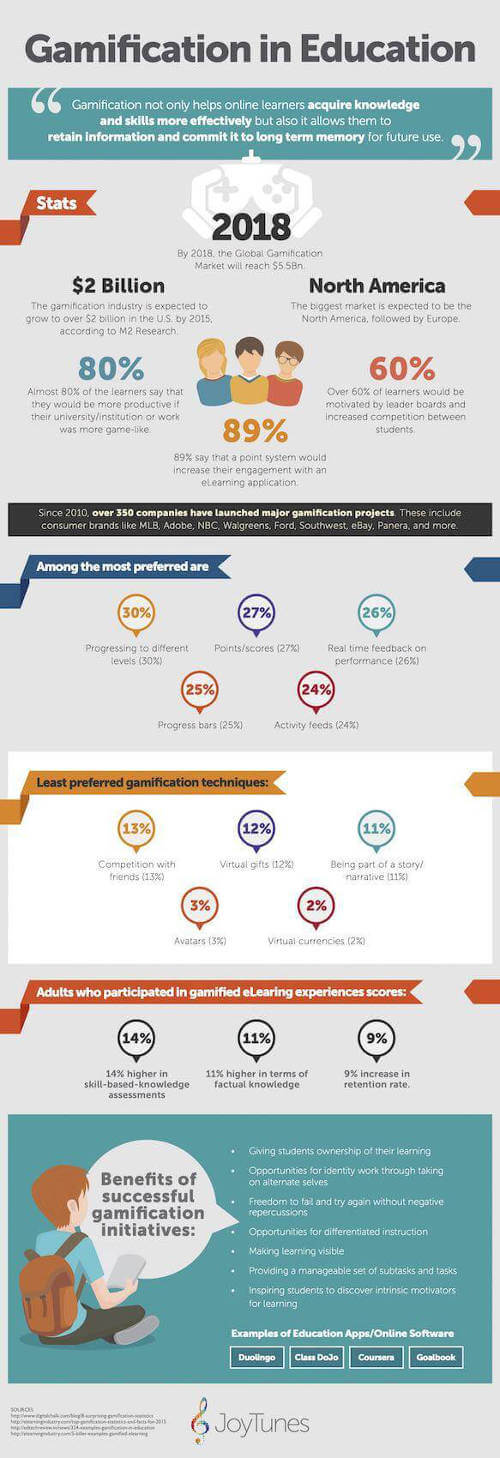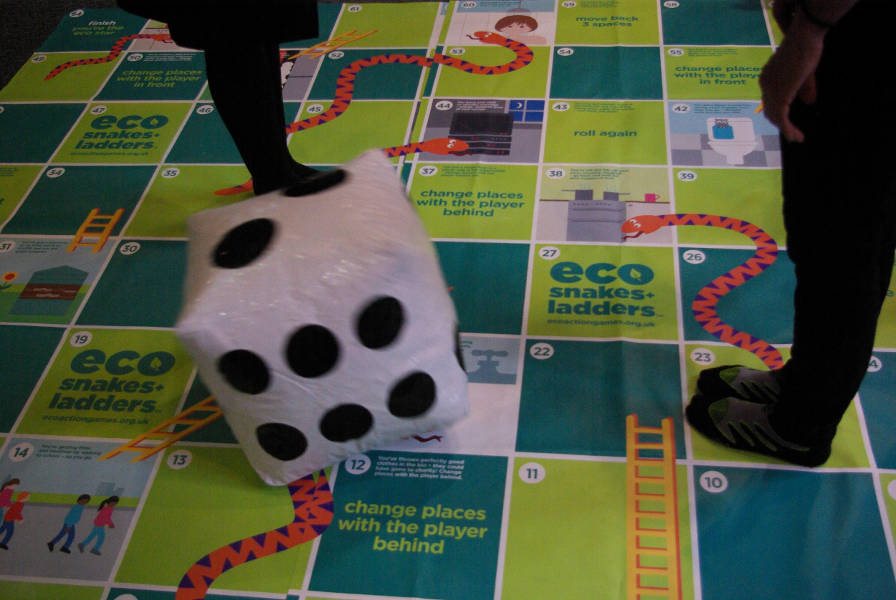
What is Gamification?
Gamification – a relatively new word that any version of Microsoft Word 2011 and below will have trouble identifying it as a legitimate. A novel product of the 21st century, the term gamification was unheard of until a little less than a decade ago. Not until later in 2011 was the term officially placed in the Oxford dictionary that now describes gamification as “The application of typical elements of game playing (e.g. point scoring, competition with others, rules of play) to other areas of activity, typically as an online marketing technique to encourage engagement with a product or service.” More simply put, one could describe gamification as the process of incorporating gaming elements into anything outside the realm of gaming.
Since the inception of gamification, its popularity has soared heights and won the hearts of numerous professions and industries, from the likes of healthcare services, to the food and beverage industry, to human resources and recruiting practices. According to statistics, by 2018, the global gamification market is expected to reach a net value worth of $5.5 billion dollars (Markets and Markets). The United States alone will claim $2 billion of this total (M2 Research), which is not surprising given that they are the number one, leading market in gamification. As an incredibly lucrative market, its not hard to believe its reach, more evidently so in academia.
The draw however is not just monetary gain as demand from learners is also striking: 80% of students claim that their productivity would increase if their university/learning institute were gamified (TalentLMS). With such a strong backing and an inevitably increasing trend, how can academic institutions follow suit? Should they follow suit?
What is the difference between gaming and Gamification?
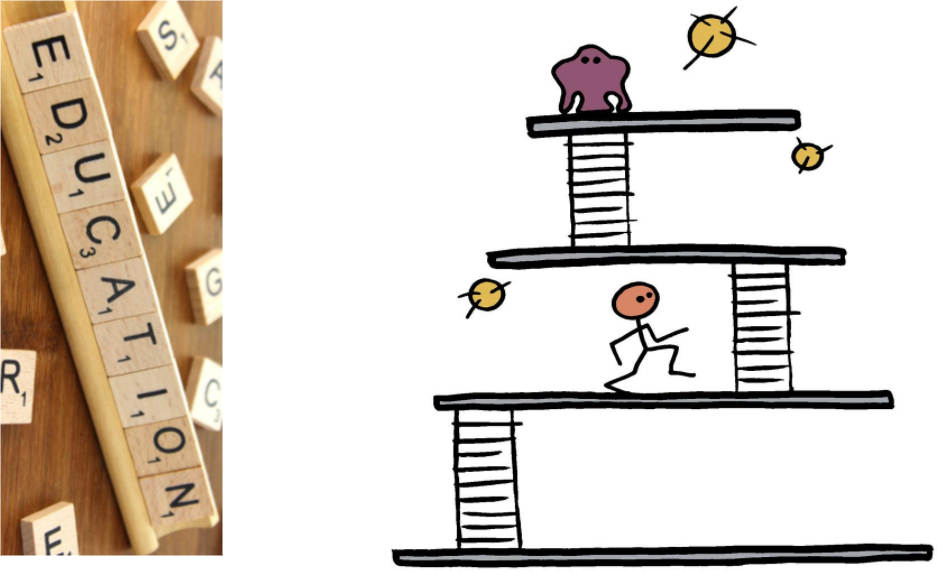
Even in all its glory, success, and popularity among the masses, gamification is still considered dangerously attractive to many. Parental and academic concerns are largely based on the struggle to identify the boundaries between gaming and gamification. How do we separate the two? Or do we accept that there will be instances where lines be blurred? If we are able to do so, can there be a way to ensure the same learning outcome sand objectives are still aligned and met?
Gaming is simply defined as the act of playing games: games however now come in various forms, sizes, shapes, and platforms – from board games, to toy games (e.g. Kendama, yo-yo), to console games, PC games and so forth. In this modern age, more often than not, people associate gaming with electronic gaming – so playing Mario on your Nintendo Switch or League of Legends on your computer etc. What connects all these gaming variants is the fundamental objective on which they all created with from the beginning: “How do I win?” While there are many elements of gaming that drives players such as reward, competition, progress and comradery; winning is the biggest lure and stressed the most. However, the truth about gaming is that the best games are those that stimulate learning and incorporate it subtly yet intentionally. This is where the lines begin to blur between the two, but also where the goal of presenting a learning and challenging environment converge.
As you might recall – gamification is the process of incorporating traditional gaming elements into a non-game framework. Here the differentiation between the two appears to be more stark – academia inherently classifies under the non-gaming context. With gamification the goal is not a complete upheaval or transformation of how/what we learn at our academic institutions. It is the addition of the bells and whistles (found in any good game) that targets a very human but vital part of us required for effective learning – our motivation. Yu-kai Chou breaks this idea of motivation further for us by identifying the different facets that drive the average Joe/Joan:
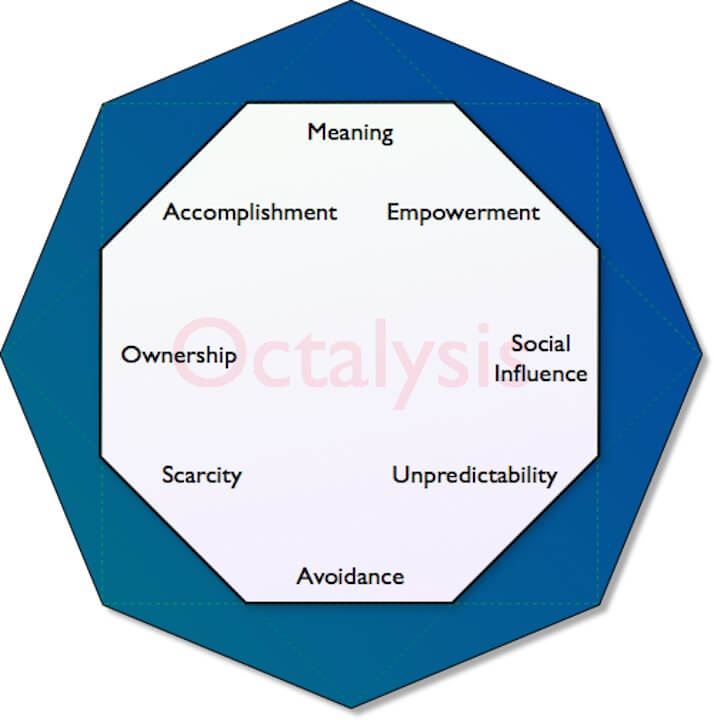
Some general examples of gamification in the classroom include the following:
- Assigning badges instead of grades
- Converting grades to a point system i.e. students begin at 0 and earn points up to 100
- Problem-based learning: creating a challenge (potentially real world example) with more than one solution
- Creating a timeline with milestones that allows students to track progress and set goals: different rewards are awarded when milestones are reached
Gamification of Math – What are the benefits of Math Gamification?
The pervasiveness of gamification in academia has had a particularly strong impact on the instruction, learning, and development of math curricula. As one of the core subjects students are bound to throughout their academic journey, math is one of those subjects that either students love to hate or cannot live without. Broadly speaking however, the majority of math learners struggle with learning the content and fail to find interest and/or appreciation of the subject. Coined as one of the most intimidating subjects, psychological and medical studies have identified mental health issues linked to the study of math (i.e. math anxiety).
As such a delicate yet aggressive subject matter, game developers and educators have approached this in a number of ways. One clear path that has been taken by many is transforming and conforming to the pure game framework. Some examples of these games include Land of Venn and Guess the correlation. The alternative approach as earlier discussed involves the clever inclusion of gaming elements while still functioning as well as maintaining a strong identity as a classroom (or e-classroom). Some examples of these applications include Knowre and online learning platforms such as StudyPug.
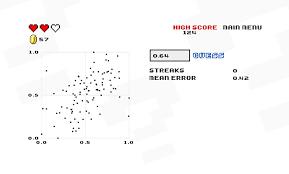
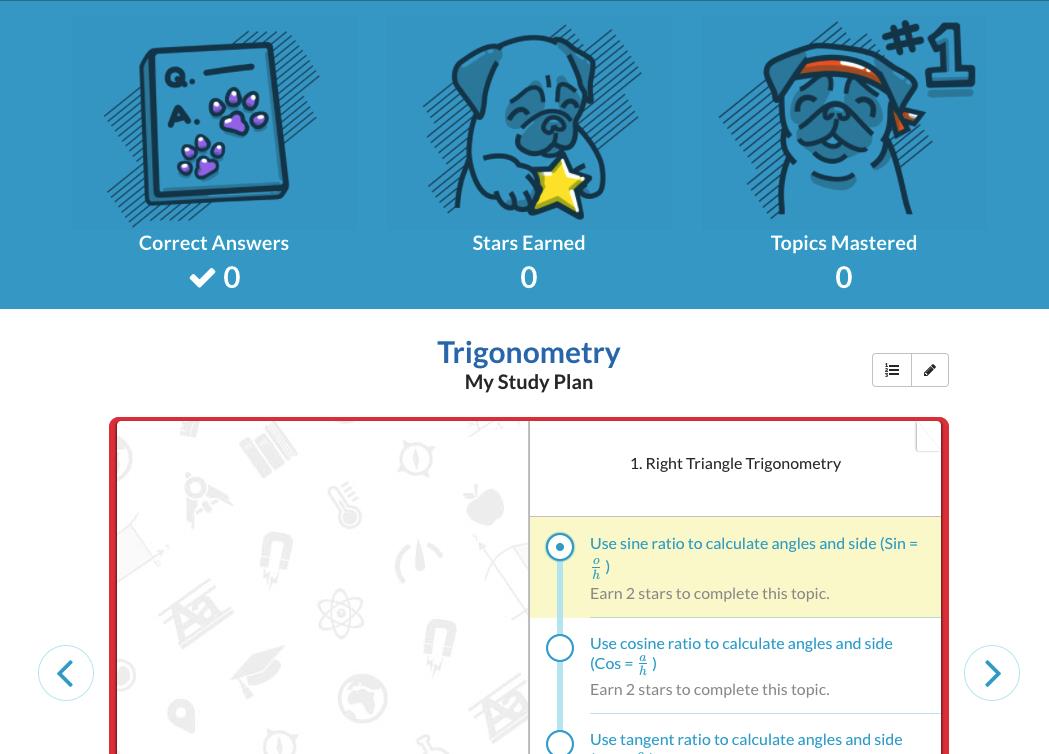
The transition from traditional learning to gamification of math education has proven incredibly successful with studies highlighting numerous benefits for both student and teachers alike. A study from Deakin University identified that students adopted a more positive attitude towards math when gamified. Additionally students were also more engaged and motivated as the process of gamification helped relieve the repetitive nature of practicing question after question. Other benefits of gamification also include increased engagement in learning and productivity.
Gamification has also been linked to reduce tendencies of math anxiety. Such is linked to two different factors: first learners are now open to learn in the comfort of their own pace and space that may no longer be bound by a traditional classroom setting or timeline (i.e. progression of math concepts and topics is independent and achieving competency is now perceived as desirable). Studies have also indicated that when lessons are gamified, students attention spans increase, particularly those with learning disabilities such as ADHD, are less disruptive and more focused.
One other benefit, students are now able to approach math problems with a stronger backbone and thicker skin. In a gaming framework there is now a stronger tendency to not give up on seemingly impossible questions or the failures to grasp concepts in Algebra 2, or Precalculus so that one can advance on to university statistics.
Lastly, gamification provides a more intuitive and easier way to track the progress of each student. Through the use of metrics via progress charts/bars, instructors are able to immediately gauge strengths and weakness of a student and consequently address student needs by providing more support to areas requiring improvement and rewarding students for their success in areas they have mastered. Real time statistics on students’ progress can also be beneficial to instructors in providing instant assistance to students. Instant feedback on student progress is crucial as it also informs the instructor that perhaps the method of delivering the content, or the content itself, needs to be revised and retaught in an alternate way to improve student understanding. Lastly, indicators of progress can also serve as a motivating tool for students when they observe levels or tasks progressively being completed.
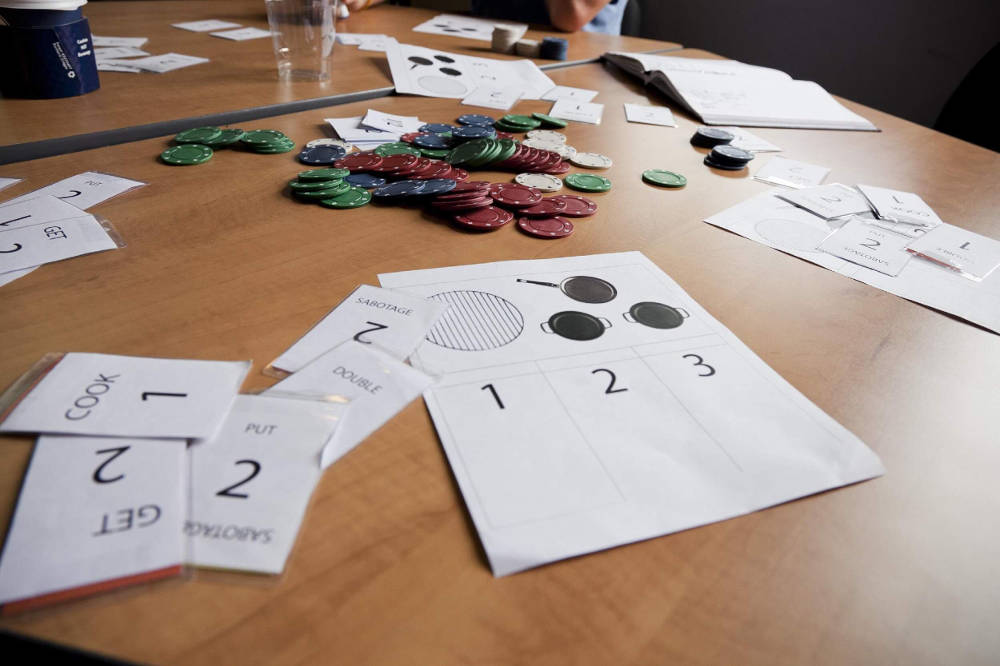
The future: To gamify or to not gamify?
Gamification of education appears inevitable but will the voices of students and learners be heard? With the myriad of benefits for students and instructors alike and a strong presence of digital learning in this era, it is likely that gamified demands will be supplied. Parental support is also evident as two-thirds of parents in various communities claim that with the effective use of technology, children develop college and career skills (ProjectTomorrow). According to a 2015 report, 78% of middle school students use online videos while 61% of those students play online games, all to achieve learning goals (ProjectTomorrow). Recent studies also show that 89% of learners would be more motivated to engage in E-learning if a point system was incorporated into the learning process. Furthermore 60% of learners also indicated that the use of leaderboards would also increase motivation by encouraging healthy competition among peers.

Altogether these statistics suggest a very strong movement not just towards e-learning, but also to gamification. Certainly this is a trend that will continue to gain more traction in at a post-secondary level where blended learning and online learning provide rich environments and opportunities to gamify.
One clear example of this can be observed in the construction of online academic institutions. Our main site, StudyPug utilizes gaming elements such as progress trackers, badges, and avatars as tools to motivate students and to keep them on track to completing their courses. Although all of our content is accessible 24/7 and acquiring help is easy, being purely online in format requires a placeholder to spur students on while they are learning in real time.
Like every rising trend, there will be a resistance. Such deserves attention as well as it can be a very common misconception that all classrooms need gamification in order to make learning fun. As pointed out by Phil Aldridge, a passionate math teacher, classrooms should be inherently gamified – at least a good classroom in our opinion. Much like gaming, students should receive timely feedback, be rewarded for accomplishing goals, be encouraged for effort and progress, be provided a set of guidelines (i.e. syllabus and/or learning objectives), have a variety of fun and engaging learning activities, and face the consequences when they fail to follow the rules.
Such a sentiment is no secret and is shared by one of the godfathers and earliest pioneers of gamification, Yu Kai Chou – “…Truly good gamification often will not let anyone feel something is “gamified…” So the next time you feel like you are getting flack for “playing a game”, be sure to defend not only the burning castle or the modifications being made to your falcon-X-heavy-esque spaceship, but also your very right to learn and achieve academic goals while doing so.
